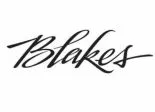- within Law Department Performance topic(s)
- with Senior Company Executives, HR and Finance and Tax Executives
- with readers working within the Healthcare industries
In its recent decision in Abbas v. Esurance Insurance Company of
Canada (Abbas), the Court of Appeal of Alberta
(Court of Appeal) reaffirmed that an insurer has no obligation to
indemnify an insured for any loss arising from the same event under
the same insurance policy if the insured files a fraudulent proof
of loss that is material to one or more parts of the claim. That is
the case even if some part of the proof of loss is not tainted by
fraud.
Abbas reaffirms that the common-law-fraudulent-claims
rule, which has existed for 200 years, will continue to apply in
Alberta, and that courts will impose harsh consequences on insureds
who violate that duty of utmost good faith by filing a fraudulent
proof of loss.
BACKGROUND
The insured was injured while travelling as a passenger in a vehicle driven by an uninsured driver. The insured filed a proof of loss form with the insurer, Esurance Insurance Company, for the following insurance coverage:
- Section B SPF No. 1 benefits – an income replacement payment available to an insured who has suffered injuries in an automobile accident (Section B Benefits)
- SEF No. 44 benefits – coverage to assist an insured who is injured in an accident caused by an uninsured driver (SEF Benefits).
The insured falsified his employment status when he applied for
Section B Benefits. In response, the insurer refused to cover the
insured's entire claim on the basis that the false statements
related to the Section B Benefits forfeited the insured's right
to recover the SEF Benefits to which he otherwise would have been
entitled.
The insured admitted that he was not eligible for Section B
Benefits but sued the insurer for the denial of the SEF Benefits.
The insurer applied for summary dismissal of the insured's
claim. An applications judge dismissed the insurer's summary
dismissal application, finding that it would be "patently
unfair" to deprive the insured of benefits that are unrelated
to the insured's fraudulent statements. However, the insurer
successfully appealed to a justice of the Court of King's
Bench, who granted summary dismissal. In doing so, the justice held
that severe sanctions are justified if an insured files a false
proof of loss. The insured appealed to the Court of Appeal.
COURT OF APPEAL DECISION
The Court of Appeal held that, because of the insured's
fraudulent statements regarding his claim for Section B Benefits,
the insurer was not required to cover any of the losses claimed.
The insured's fraudulent statements were material to his claim
for Section B Benefits, and therefore the
common-law-fraudulent-claims rule barred recovery of all claims
related to the same event and under the same insurance contract.
Accordingly, the insured could not recover the Section B Benefits
or the SEF Benefits that would otherwise have been payable but for
the fraud.
In reaching this conclusion, the Court of Appeal considered Section
554(1) of the Alberta Insurance Act, which states that an
insurance claim is invalid if an insured commits a fraud or
willfully makes a false statement in respect of a claim.
The court rejected the insured's argument that
"claim" should be read narrowly to restrict its
application only to the specific claim to which the fraud or
willfully false statement is related. Instead, the court held that
the word "claim" must be interpreted broadly to apply to
all claims that the insured has made to his or her insurer under
the same insurance contract and arising from the same event. The
court held that this severe result was justified by Section 554(1)
of the Insurance Act, the purpose of which is to deter
insured persons from filing false proofs of loss or providing
insurers with false or incomplete information.
TAKEAWAY
The Court of Appeal's decision in Abbas recognizes and affirms that the parties to an insurance contract are required to conduct themselves in accordance with the principle of utmost good faith. Insurers operate under an information deficit. Accordingly, they rely upon insured persons to provide full, accurate, and complete information about the circumstances of a loss. Abbas confirms that:
- The common-law-fraudulent claims rule continues to apply in Alberta
- Insurers are relieved of the obligation to indemnify an insured for any loss arising if the insured files a fraudulent proof of loss that is material to any part of the claim.
For permission to reprint articles, please contact the bulletin@blakes.com Marketing Department.
© 2025 Blake, Cassels & Graydon LLP.
The content of this article is intended to provide a general guide to the subject matter. Specialist advice should be sought about your specific circumstances.



